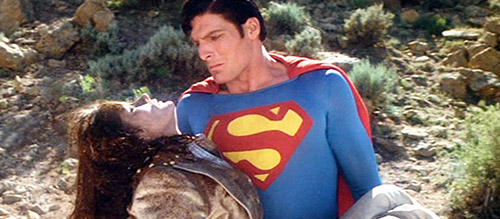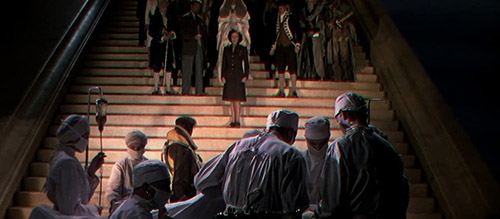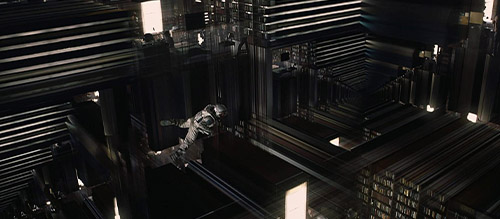When Love Transcends Time (Travel)
Love is the only force in the universe stronger than time. Someone said that once, probably in song. Time travel on film doesn’t have to involve a Delorean with a Flux Capacitor or an Art Deco machine with a revolving parasol to fling you backwards and forwards through the ages. Time travel can be thematically evocative and emotionally resonant as well. As a plot device, time travel is not just an excuse for cool visuals and twists and turns in your tale but it can miraculously give characters their happily ever after, snatch it cruelly away, or both.
An imaginative storyteller knows that the power of love overcoming the linear passage of time can be a powerful conceit, and this goes doubly on film when paired with the right visuals and performances. Phil in Groundhog Day using his infinite time loop to become a better person and prove his love to Rita. Superman reversing the spin of the Earth’s axis to turn back time and save Lois Lane’s life. CJ traveling back time and again to engineer the correct course of events to save her brother from an untimely death in See You Yesterday.
While there are many great time travel films and films about love and time’s interaction, this piece is going to focus on three distinct examples of such and the different ways in which this is approached by three stylistically distinct auteur filmmakers – Powell and Pressburger, David Lowery and Christopher Nolan.
A Matter of Life and Death follows Peter (David Niven), a WWII pilot shot down over the English Channel. Though he should have died and passed on to the afterlife, due to an administrative error he is trapped in a state of purgatory, no longer moving in time. During his accidentally extended stay on Earth he falls in love with June (Kim Hunter), and it is this love that will be the key item of evidence in the heavenly trial for his existence.
In his state between life and death, his existence still very much up for debate, Peter doesn’t follow the same rules that his Earthbound allies June and Dr Frank Reeves must do. Time waits for no man, except if his continued state of being perplexes and fascinates Heaven.
The finale of the film sees Frank defend Peter’s right to exist and stay on Earth for a normal human life just as his physical body goes under the knife to try and free him from his “highly logical” delusions. Peter steps away from his body lying under anaesthetic as the world around him stands still. He addresses the celestial court and he wins his day when incontrovertible evidence of love is presented – Kim’s tear of passion and heartache frozen on a rose petal and her willingness without hesitation to accept death to be with him.
In A Matter of Life and Death, Powell and Pressburger see love as the most powerful thing in the universe, capable of breaking and bending time, space, life and even death to its will.
A Ghost Story follows an unnamed man (Casey Affleck) who is killed in a car accident but returns to earth as a sheet-clad ghost. What is keeping him from passing on seems to be his love for his wife (Rooney Mara) who grieves for her dearly departed but eventually gets on with her life. As the ghost stays in his former home musing on what he once had, time itself seems to loop around to much earlier in his timeline.
The ghost is unable to comfort and has to observe his wife gong through the many stages of grief over weeks and months – she stress-eats, she morosely goes through photos and listens to her late husband’s music on a loop. Eventually she is able to move on, to pack up her memories and move out of their house to embark on the rest of her life. The ghost is unable to follow and is trapped in this one location he associates with happier times as the many owners of the house come and go over decades – agony for someone in love, and who is condemned to remain in love for all of eternity.
At one point he notices another ghost in the house across the street who has clearly been trapped in her situation for much longer than him: “I’m waiting for someone.” “Who?” “I don’t remember”. Without all of time’s usual markers impacting you – ageing, seasons, relationships – it doesn’t really mean much. When love is all that is keeping you in this world, what is time?
Finally, after an indeterminable number of years, the ghost is able to extract a note his wife secreted in a hairline crack in the wall. The ghost reads the note (we do not see the contents) and he finally disappears. On occasion he has managed to influence the physical world, to throw objects and flicker lights, and even as is later revealed, to attempt to send a message to his and his wife’s past selves.
The ghost’s unending love and regret grants him a trip though time, but not a linear one forwards or backwards. Instead, a trip where he and his wife are experiencing their whole relationship and the strong feelings associated with their time together all at once. The note that finally sets him free likely contains some words akin to “I’ll always love you but it’s time to go”. David Lowery sees love as something that remains beyond death and something that can still be experienced out of order, the power of emotion echoing through decades.
Interstellar follows an astronaut (Matthew McConaughey) leading a mission through a wormhole to find a new home for humanity, who have exhausted Earth’s resources. Time dilation caused by the wormhole means that Cooper’s family back home have aged decades from his perspective, but once he becomes stranded light-years from home, gravity’s influence on time may be the key to letting him send a message back through time and space to Earth.
Though a lot of things are done well in this space epic, the whole love overcoming time thing is one thing that really doesn’t work in Interstellar. It all comes down to filmmaker intent. Whereas the rules set out in Powell and Pressburger and David Lowery’s films were malleable, even playful, from the off, Christopher Nolan set out to create the hardest of hard sci-fis. He is demonstrating and discussing the latest theories about the nature of black holes, gravity and the movement of time and space with the invaluable assistance of physicist Kip Thorne.
To dedicate so much time and effort to establish the rules our universe operates by, only to allow Cooper to talk to his daughter Murph (who has grown up without him) through time and space because he really loves her and because you need an emotional high point for your third act, feels a little like having your cake and eating it. Either the wonder of love conquers all or it’s just another wonder in the universe.
For all his strengths as a filmmaker, Christopher Nolan can be a hard man to read, his true thoughts on any human experience left opaque and ambiguous. Cooper and Murph grow up apart, and Cooper is only able to see the progress of his daughter’s life in cruelly spaced out increments until the stranger workings of the universe miraculously brings him back. Nolan may think love can overcome the hard and fast laws of the universe, he may not. He may be leaving it up to us to decide.
Recommended for you: 5 Movies About Time Travel for People Who Don’t Like Sci-Fi
Time travel films do not always fling their characters into the distant past or the far future. By taking an essential human experience, falling in love, and pushing things only a little further into the outlandish, Powell and Pressburger, David Lowery and Christopher Nolan are commenting on how love makes us feel. Who among us hasn’t felt time stand still as in A Matter of Life and Death, felt helpless as time snatched someone special away as in A Ghost Story, or wished as in Interstellar to be able to reach backwards and tell a loved one something important? As far as humanity is concerned, time moves in a straight line, but love, and love on film, changes that experience.
“Nothing is stronger than the law in the universe, but on Earth, nothing is stronger than love.” – Dr Frank Reeves, A Matter of Life and Death





